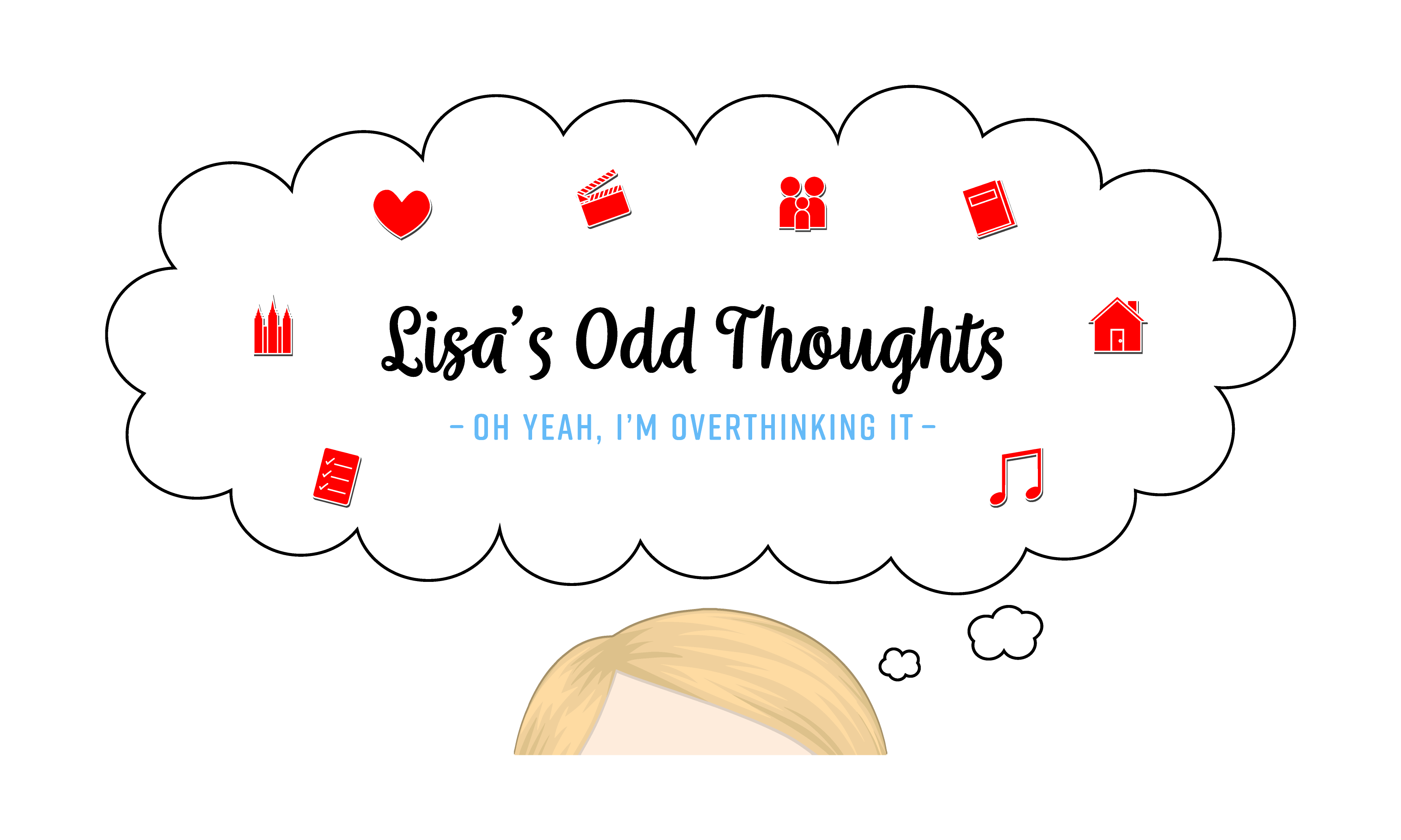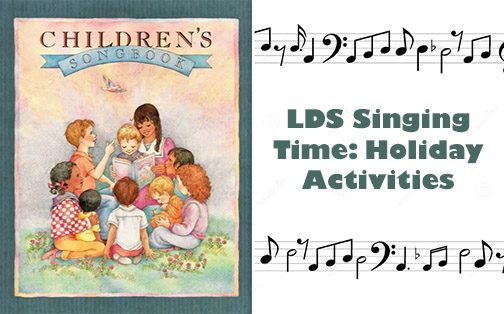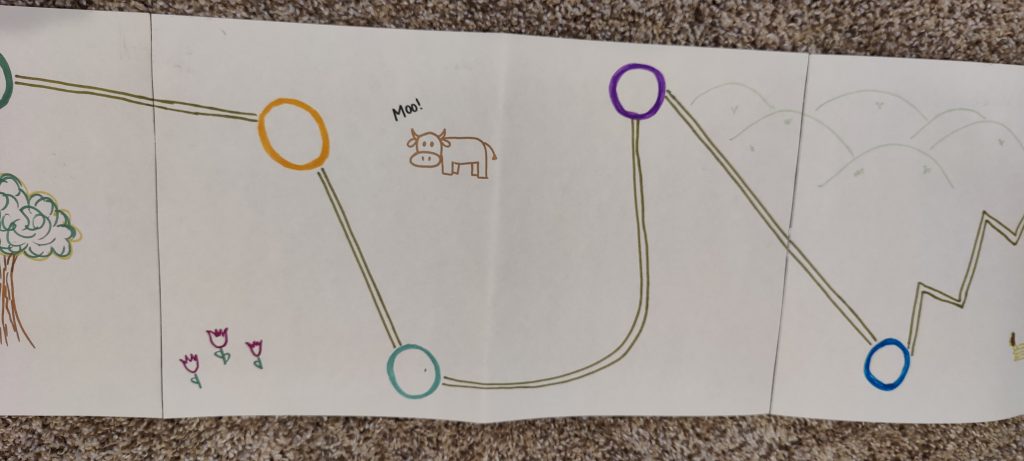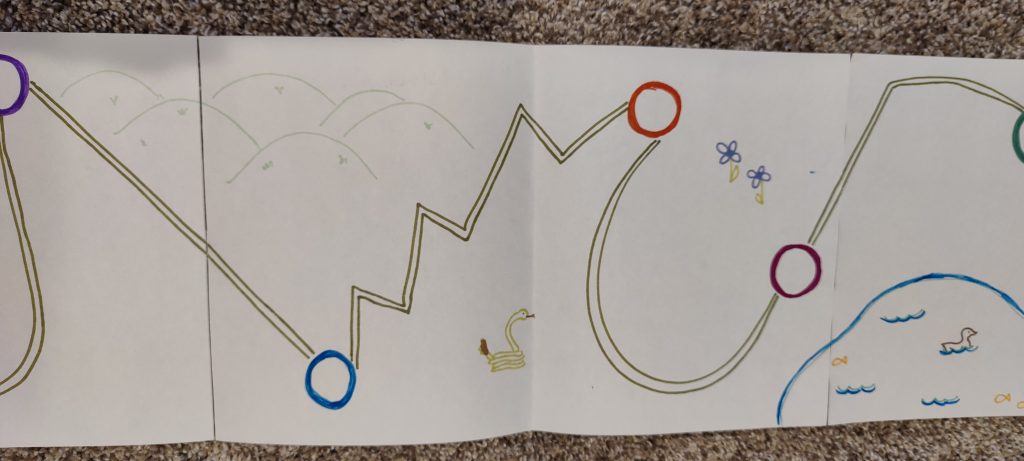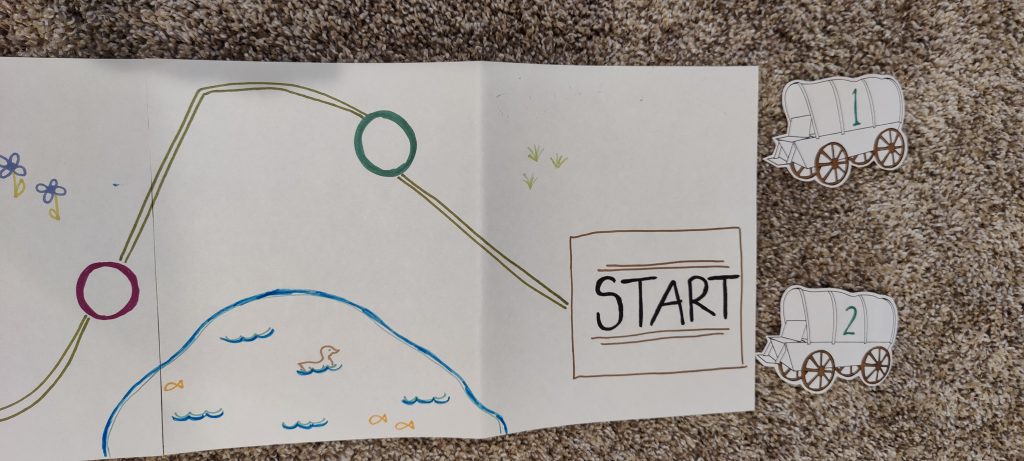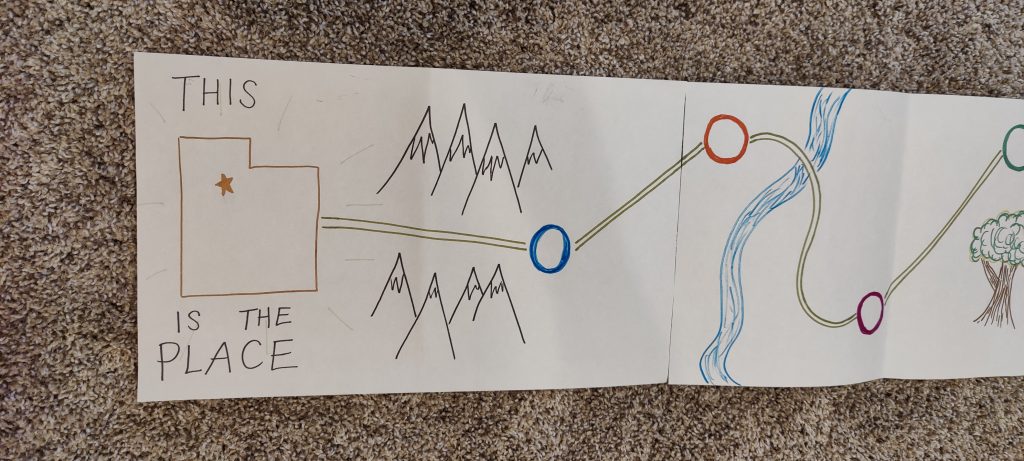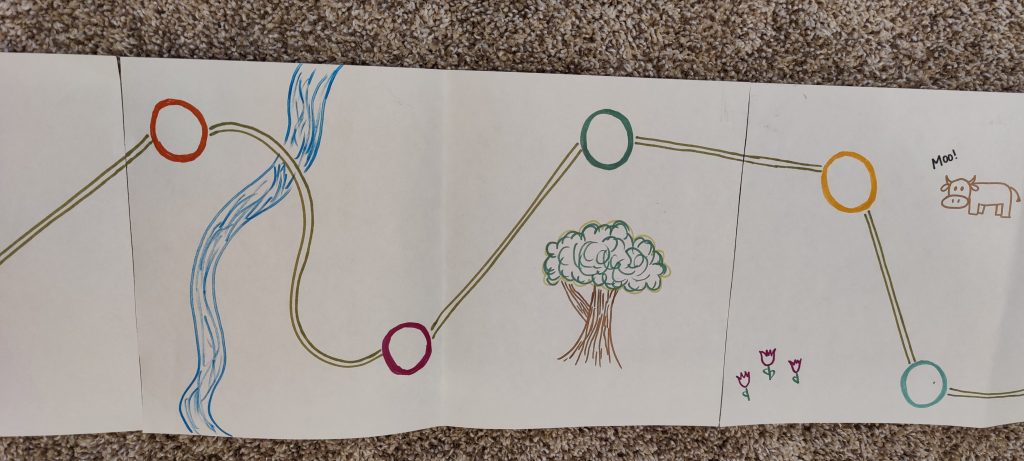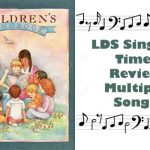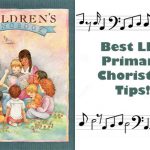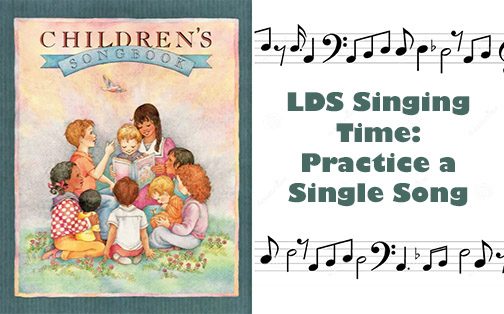I love holidays, and I especially love celebrating religious holidays at church! Being with the Primary kids for Christmas and Easter especially always make for extra special holidays. So enjoy that time!
Holidays are also a great excuse to make Singing Time extra seasonally fun, so have at it!
This is Part 4 in this blog series: Singing Time Activities for LDS Primary Choristers. See the other articles in this series by clicking these links below:
Part 1: Best Tips for Primary Choristers
Part 2: Activities to Practice a Single Song
Part 3: Activities to Review Lots of Songs
Note that many of the activities listed in the other articles in this series can be adapted for various holidays. Use holiday-themed or seasonal paper cutouts and boom, done and done. Or hide a holiday object for the Hot & Cold Game and boom again, done and done again. Be creative and remember to reuse and adapt successful and favorite activities to fit your holiday needs.
That being said, here are seven more holiday-specific Singing Time activities:
Valentines Broken Heart Match Review Game
Cut out paper hearts of varying sizes and colors. Then cut them in half, again varying the deign of your cut (some straight, some curvy, some zigzag). Or make the game harder for older kids by making all the hearts identical.
On the first side of each heart write the first half of a phrase from a song you wish you sing, such as “I’m Trying to be…” On the second half, write the end of that phrase, such as “Like Jesus.”
Put the first halves on the board for everyone to see, but hide the second halves around the room. Have a child pick a missing half from around the room, take it to the front, and match it to its correct first half, completing the phrase and finishing the heart. Then sing that song.
St. Patrick’s Day Clover Cover-Up
Put your flipchart/poster on the board (or you could write the words directly on the board) and sing the song while pointing to each and every word and picture.
After each time you sing the song, choose a child and give him/her a large, paper four-leaf clover and let them tape or magnet it over the flipchart, covering whatever word(s) or picture(s) they want. Sing the song again with more and more words covered every time.
You could also give each helper child three or four clover cutouts instead of just one to cover the song with in order to speed things along.
Note: You can do essentially this same activity with any paper cutout for any holiday. I recently subbed in my current ward as the chorister right before Thanksgiving and I did this same game, but used pictures of turkeys instead of St. Patrick’s Day clovers. I called these turkey cutouts “naughty turkeys” who were trying to “trick” the kids, and the kids had to remember what words/pictures were hidden underneath the turkeys. Exact same concept, just different pictures. And the kids loved those naughty turkeys!
Easter Egg Hunt Review
Write down songs to review on slips of paper and put them into Easter eggs. Before Primary, hide the eggs around the room. Choose a child to “hunt” for an egg. Sing the song inside it. Repeat until all the eggs have been found and the songs have been sung.
Easter Egg Shakers
For the almost-three years that I was the Primary Chorister, this activity was always a highlight of our Easter season. I loved it, the kids loved, everyone loved it!
Make Easter Egg Shakers. Fill Easter eggs about halfway with dry rice or beans. Make enough for every child to get at least one egg (or two, if you have enough eggs). Tape them closed with colorful washi tape.
Note: you can also buy egg shakers online, but making your own is a lot cheaper. However, with homemade ones you run the risk of one kid opening his egg and spilling beans all over the floor. Pros and cons. Speaking of kids spilling beans all over the floor…
Before you pass them out, remind the kids to not pull the tape off and to not open the eggs. Kids are smart and know what to do with Easter Eggs: you open them! And they will try to open them if you don’t tape them closed. Remind them that these eggs are not filled with candy and need to stay shut.
Pass out the eggs and sing wiggle songs while shaking them. Good songs for Egg Shakers are, but not limited to:
- Do As I’m Doing
- My Hands (sing, “My eggs upon my head I place,” instead of “My hands”)
- Head, Shoulders, Knees, and Toes
- Singing a Song is Fun to Do (“Shaking my eggs is fun to do”)
Other than wiggle songs, I found that kids also had a good time just shaking their eggs to the beat of our regular songs we were singing as well. Use the heck out of your Egg Shakers and love every minute!
Note: please sanitize the eggs after church with disinfecting wipes, because inevitably you’ll get some yucky kids who put their eggs in their mouth. I don’t know why, but believe me, they’ll try it. Or, if you’d rather, just let the kids take the eggs home for keeps and make new ones the next year. Again, pros and cons.

Pioneer Day Trek Race Game
In Utah we celebrate Pioneer Day on July 24th marking the day that the first pioneers entered the Salt Lake Valley. I liked to honor that holiday with the following homemade game:
Make a map/playing board with a starting point of Missouri and ending at Utah and decorate it with landmarks, animals, etc. (imagine a Candy Land-like board with a particular trail that you follow past certain pictures). Mark about ten or so stops along the map as spaces to stop.

I made my board on several 8.5×11 papers taped together so that I can fold it and store it easily in my Primary box; storing a sheet of paper is much easier than storing a poster board, but you can do either.
Note: I drew my board by hand, but if you’re not in the mood for drawing you can always print out pictures and glue them onto a poster board (or paper, like I did).
Print two clipart pictures of covered wagons as playing pieces and label them 1 and 2.
Divide the children into two teams and “race” to move their covered wagon to Utah in order to win. There are a few options for how to move your piece:
- Spinning wheel: write various directions for moving forward or backward on the slots of the spinning wheel. On a team’s turn, have their player spin the wheel and follow the directions written there.
- Index cards: write various directions for moving on index cards. Place them face down and players must draw the top card and follow its directions (similar to the board game Sorry).
- Roll a dice: list 6 various ways to move and post it on the board for everyone to see. Have players roll a dice and the number rolled will correspond to the direction listed.
Directions should be split between moving forward, moving backwards, and a few fun options like lose a turn, go again, or answer a question correctly to move forward or move backward if you get the answer wrong (questions can be about the songs you are learning). Get creative.
However you choose to move your covered wagons and “race” to Utah, be dramatic and silly with it. For backwards moves, write things like, “You got bit by a rattlesnake! Move backward 1.” Think back to that old Oregon Trail game and you’re golden.
Note: you might have to adjust the size of your playing board based on your “move forward” and “move backward” directions. If, for example, your board is only ten spaces long and one team rolls a six on the dice, then your game will be more than half over in a single roll. Make that board much longer. Plan for each team to have roughly 4-6 turns depending on how much time you have. You want your game to be challenging but still win-able in that time.
Christmas Chimes
My mom owns a set of musical chimes labeled per musical note that I always borrowed for this annual activity. If you can’t get your hands on chimes, these musical bells would accomplish the same thing.
Teach the song “Christmas Bells are Ringing” prior to this activity so the kids are familiar with the song.
On a poster, write out the words of the song and the corresponding chime numbers.
Bring your chimes (or bells) to church. Pro Tip: my mom’s chimes only come with two mallets for playing, which obviously isn’t enough for all the Primary kids. So I bring spoons, which make a nice ringing noise. And of course I have plenty of them.
Give each child a chime and a spoon to play with. Smaller kids will most likely need a teacher or other adult to help them.
Play through the song on the chimes, pointing along the poster to direct them. Don’t try to sing while the chimes are playing because that’s just too complicated. Kids will just enjoy the chimes on their own.
After each song, have kids pass their chimes to a new child so you can play through the song again. Try to give everyone at least one turn before the end of Singing Time. You can ask kids who haven’t had a turn yet to raise their hands for kids to know who to pass their chimes to.
Decorate an Ugly Christmas Sweater
Wear an ugly Christmas sweater, one with a particularly large weave.
Write Christmas songs on strips of paper and tape them to Christmas ornaments. Have a child choose an ornament and announce the song to sing. Then hang the ornament in the ugly sweater until the Chorister is beautifully decorated. And of course sing the song.
Note: I did this while I was 8 months pregnant and we hung ornaments on my big baby belly, which the kids thought was hilarious. In other circumstances, keep things comfortable by not hanging ornaments in…ahem…awkward places. Try hanging ornaments on your sleeves, which would also be really fun for you to raise your arms and show a growing number of ornaments hanging off you. If you don’t want to wear the sweater yourself, you can always ask for a volunteer, either a kid or a teacher, and have then wear the sweater over their shirt.
Check Out Other Singing Time Activity Ideas
This is Part 4 in this blog series: Singing Time Activities for LDS Primary Choristers. See the other articles in this series by clicking these links below:
Part 1: Best Tips for Primary Choristers
